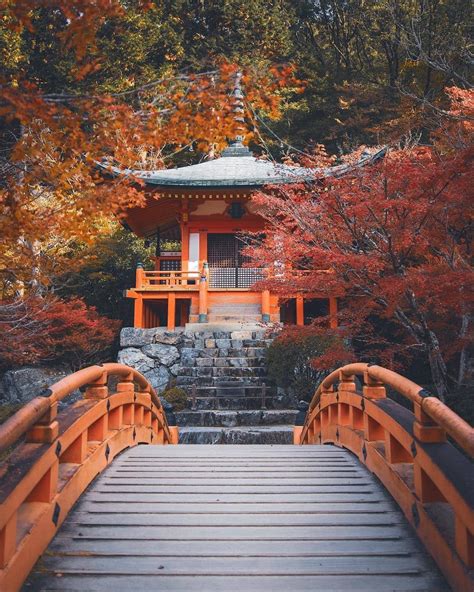Are you ready to embark on a journey through time and culture? Join me as we explore the ancient capital of Japan and dive into the rich history and significance of Kyoto’s temples. From the awe-inspiring architecture and design to the deeply rooted spiritual practices and rituals, Kyoto’s temples offer a glimpse into centuries of tradition and heritage. In this blog post, we will take a closer look at some of the must-visit temples in Kyoto, and examine the efforts being made to preserve and protect these historical treasures for future generations. Whether you are a history enthusiast, architecture buff, or simply seeking a deeper understanding of Japanese culture, Kyoto’s temples hold a wealth of knowledge and beauty waiting to be discovered. Let’s embark on this fascinating journey together and gain a new appreciation for the timeless allure of Kyoto’s temples.
History and significance of Kyoto’s temples
Kyoto is home to some of the most ancient and revered temples in all of Japan. These temples hold a rich history and great significance in the Japanese culture. Each temple has its own story to tell and has played a crucial role in shaping the cultural and spiritual identity of the city.
Many of Kyoto’s temples date back hundreds, and even thousands, of years. They are a living testament to the country’s long and storied history. The serene beauty and intricate architecture of these temples provide a window into the past, allowing visitors to experience the spiritual and cultural heritage of Japan.
Furthermore, the temples in Kyoto are not just historical relics, but also active centers for spiritual practice. They serve as places of worship, meditation, and religious ceremonies, attracting pilgrims and tourists alike. The temples are deeply intertwined with the spiritual fabric of the city and are integral to the practice of Buddhism and Shintoism in Japan.
Visiting Kyoto’s temples offers a unique opportunity to immerse oneself in the ancient traditions and beliefs that have been passed down through generations. The architectural beauty and spiritual significance of these temples make them an essential stop for anyone wanting to understand the rich history and cultural heritage of Japan.
Must-visit temples in Kyoto
When visiting Kyoto, there are numerous temples that should be at the top of your must-visit list. One of the most famous temples in Kyoto is the Kinkaku-ji or Golden Pavilion. This stunning structure is covered in gold leaf and sits beside a peaceful pond, creating a picturesque scene that has to be seen to be believed.
Another must-visit temple is the Kiyomizu-dera, known for its breathtaking views of the city from its wooden terrace. This temple is also famous for its beautiful cherry blossoms in spring, making it a popular spot for tourists and locals alike.
For those interested in Zen Buddhism, a visit to Nanzen-ji is a must. This temple is known for its peaceful gardens and traditional architecture, providing a tranquil escape from the hustle and bustle of the city.
Lastly, the Ginkaku-ji or Silver Pavilion is another must-visit temple in Kyoto. While it may not actually be covered in silver, the temple’s beautiful gardens and moss-covered grounds make it a serene and beautiful place to explore.
Architecture and design of Kyoto’s temples
Architecture and design are of great significance when it comes to the temples in Kyoto. The temples in Kyoto are known for their exceptional architectural styles and unique designs, which reflect the rich cultural and historical heritage of the city. The traditional Japanese architecture is beautifully integrated with the natural surroundings, creating a serene and peaceful atmosphere.
One of the distinctive features of Kyoto’s temples is the use of wooden structures and intricately designed roofs. The temples are often adorned with exquisite carvings and detailed paintings, showcasing the superb craftsmanship of the artisans. The use of natural materials such as wood and paper adds to the timeless charm of the temples, making them a true architectural marvel.
The design of the temples also reflects Buddhist and Shinto influences, with elements such as pagodas, torii gates, and Zen rock gardens. These features not only enhance the visual appeal of the temples but also hold deep spiritual significance, creating a harmonious blend of aesthetics and religious symbolism.
Visitors to Kyoto are captivated by the unique architectural designs of the temples, which serve as a living testament to the city’s rich cultural heritage. The intricate details and thoughtful layout of the temples offer a glimpse into the traditional Japanese way of life and provide a serene sanctuary for both worshippers and tourists.
Spiritual practices and rituals at the temples
When visiting the temples in Kyoto, one cannot help but notice the spiritual practices and rituals that take place within their walls. From the rhythmic chants of the monks to the intricate ceremonies performed by the local worshippers, these temples are deeply rooted in spiritual traditions that have been upheld for centuries.
Meditation is a key practice within the temples, with visitors often having the opportunity to participate in guided meditation sessions. This allows individuals to experience a sense of inner peace and tranquility, while also gaining a deeper understanding of the spiritual beliefs held by the monks and worshippers.
Another important ritual at the temples is the act of prayer and offering. Visitors can observe the locals making offerings of food, incense, and money as a way of showing gratitude and seeking blessings. Some may also take part in the act of ringing the temple bell, which is believed to cleanse the mind and bring good fortune.
Furthermore, many temples in Kyoto hold traditional ceremonies such as tea ceremonies, flower arranging, and calligraphy. These activities not only provide a glimpse into the rich cultural heritage of Japan, but also offer a meaningful way for visitors to connect with the spiritual essence of the temples.
Preservation efforts to protect Kyoto’s temples
Preservation efforts to protect Kyoto’s temples are crucial in maintaining the cultural and historical significance of these sacred sites. With the passage of time, natural disasters, and human interference, the temples in Kyoto are constantly at risk of deterioration and destruction. Therefore, various organizations and government bodies are actively involved in preserving and safeguarding these architectural wonders for future generations.
One of the key preservation efforts is the implementation of strict conservation guidelines and regulations. The Kyoto City Government, along with the Kyoto Cultural Association, has set forth stringent guidelines for the maintenance and restoration of temples in the region. These guidelines ensure that any renovation work is carried out in a manner that respects the original design and materials used in the construction of the temples.
Furthermore, ongoing research and documentation play a vital role in the preservation of Kyoto’s temples. Archaeologists, historians, and conservationists diligently work to document the architectural features, cultural significance, and historical context of each temple. This information not only aids in the restoration process but also contributes to the understanding and appreciation of Kyoto’s temple heritage.
Collaborative efforts between local communities, preservationists, and international organizations also contribute to the protection of Kyoto’s temples. Through community outreach programs and fundraising initiatives, awareness about the importance of preserving these cultural treasures is raised. Additionally, partnerships with international bodies ensure that Kyoto’s temples receive global recognition and support for their conservation endeavors.
Frequently Asked Questions
What is the history and significance of Kyoto’s temples?
Kyoto’s temples are an integral part of Japan’s rich cultural heritage, with many of them dating back hundreds of years. They serve as a connection to the past and are a reflection of the country’s spiritual and religious traditions.
Which temples in Kyoto are a must-visit for tourists?
Some of the must-visit temples in Kyoto include Kinkaku-ji (the Golden Pavilion), Ginkaku-ji (the Silver Pavilion), and Kiyomizu-dera. Each of these temples offers unique architectural beauty and historical significance.
What can you tell me about the architecture and design of Kyoto’s temples?
The temples in Kyoto feature a variety of architectural styles, including traditional Japanese wooden structures, beautifully landscaped gardens, and intricate details such as ornate carvings and colorful artwork. The design is often inspired by nature and incorporates elements of the surrounding environment.
What spiritual practices and rituals take place at the temples in Kyoto?
Visitors to Kyoto’s temples can witness and participate in various spiritual practices and rituals, such as meditation, prayer, and traditional ceremonies. These activities provide a deeper understanding of the religious and cultural significance of the temples.
How are Kyoto’s temples being preserved and protected?
There are ongoing efforts in Kyoto to preserve and protect the temples, including restoration projects, conservation of historical artifacts, and the implementation of strict guidelines for visitors to ensure the long-term sustainability of these important cultural sites.






